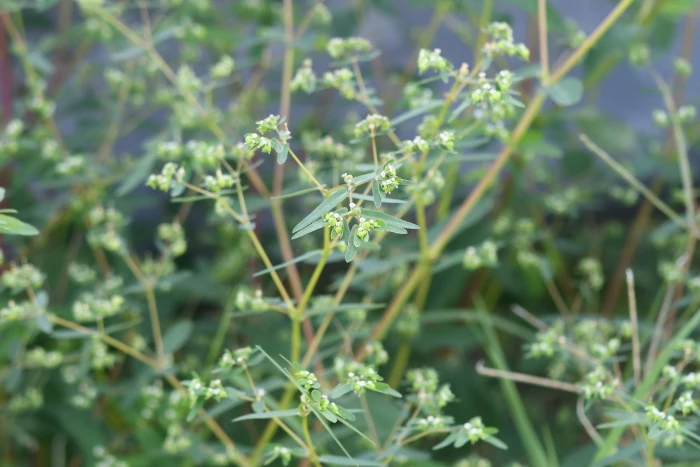Hyssopleaf Sandmat
(Euphorbia hyssopifolia)
Hyssopleaf Sandmat (Euphorbia hyssopifolia)
/
/

© Mike Ostrowski
CC BY-SA 4.0
Image By:
© Mike Ostrowski
Recorded By:
Copyright:
CC BY-SA 4.0
Copyright Notice:
Photo by: © Mike Ostrowski | License Type: CC BY-SA 4.0 | License URL: http://creativecommons.org/licenses/by-sa/4.0/ | Uploader: mpoinat | Publisher: iNaturalist |












































Estimated Native Range
Climate Requirements for Springfield, Virginia
| This Plant | Your Site | Plant Suitability for Your Location | ||
|---|---|---|---|---|
| • Precipitation | 1" - 232" | 41" | Aquatic | Aquatic |
| • High Temp. | 48°F - 109°F | 88°F | Your summer temperatures are normal for this plant. | Excellent |
| • Low Temp. | 15°F - 76°F | 25°F | Your winter temperatures are normal for this plant | Excellent |
This plant should grow very well at your location without additional irrigation.
Summary
Euphorbia hyssopifolia, commonly known as hyssopleaf sandmat, is an annual herb that originates from tropical and subtropical regions, including the Americas, West Tropical Africa, India, and Australia. It typically grows up to 31 inches tall and is characterized by its oblique leaf bases and small, loose clusters of inconspicuous flowers and fruits that are greenish or white. The plant is often found in disturbed sites, agricultural land, and along roadsides in its native habitat.
Hyssopleaf sandmat is known for its ability to quickly colonize bare or disturbed soils, making it useful for erosion control. However, its invasive potential should be considered before planting. It thrives in a variety of soil types, from sandy to loamy, and prefers full sun to partial shade. It requires minimal water once established, making it a low-maintenance option for xeriscaping. In cultivation, it is less commonly used due to its invasive nature but may be found in butterfly gardens as it provides food for certain caterpillar species.CC BY-SA 4.0
Hyssopleaf sandmat is known for its ability to quickly colonize bare or disturbed soils, making it useful for erosion control. However, its invasive potential should be considered before planting. It thrives in a variety of soil types, from sandy to loamy, and prefers full sun to partial shade. It requires minimal water once established, making it a low-maintenance option for xeriscaping. In cultivation, it is less commonly used due to its invasive nature but may be found in butterfly gardens as it provides food for certain caterpillar species.CC BY-SA 4.0
Plant Description
- Plant Type:
- Height: 1-2 feet
- Width: 1-2 feet
- Growth Rate: Rapid
- Flower Color: Green
- Flowering Season: Fall
- Leaf Retention:
Growth Requirements
- Sun: Full Sun
- Water: Low
- Drainage: Medium
Common Uses
Erosion Control, Low Maintenance
Natural Habitat
Tropical and subtropical regions, including disturbed sites and agricultural land
Other Names
Common Names: Hyssopleaf Spurge , Milkweeds , O-Nishikiso , Hyssop Spurge
Scientific Names: Euphorbia hyssopifolia , Anisophyllum hyssopifolium , Chamaesyce brasiliensis , Chamaesyce hyssopifolia , Chamaesyce jenningsii , Chamaesyce jonesii , Chamaesyce nirurioides , Euphorbia blanchetii , Euphorbia brasiliensis , Euphorbia brasiliensis f. angustior
GBIF Accepted Name: Euphorbia hyssopifolia